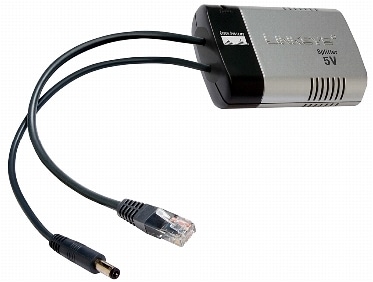Raspberry Pi PoE
I’ve been looking into ways of powering up Raspberry Pi computers from power-over-ethernet so as to allow them to be easily used in remote locations without the need for additional USB power supplies.
Of course, you can power them up through the pin headers, but finding a nice regulated supply for that option was tricky too – the main advantage of the USB power input is that it has some level of protection for the Pi.
There are a number of PoE hats for the Pi, including this one which is available locally, but for $80.
When I used to do more IP Telephony work, I used to buy adapters to power up non-PoE phones from PoE switches – specifically the Linksys POES5, now discontinued, but which can be found for $20-30 on the web:
These are capable of pushing out 5V at up to 2A from a IEEE Class 0 PoE source – perfect for a Pi (perhaps not the 3, but all the others). I didn’t have a USB cable adapter, so I modified one to do the job as a test – it’s pretty straightforward if you can solder – and it would be pretty easy, even if you can’t. The cover for the POES5 pops apart revealing this board inside:
The ethernet cable from the switch plugs in on the right, and the two outputs on the left are the ethernet passthrough on the 4-pin connector (note – this means it can’t pass through GigE) and the 5V output on the 2-pin connector.
I chopped the end from a micro-USB cable and removed all but the power leads – red and black which go to pins 1 and 5 on the B-end
I attached these to the same locations as the original red/black wires on the 2-pin connector and voila
This old model B boots up just fine – I’m planning to use this one for an OpenHAB host – I’ll post more on that later.
New VM
We’ve migrated this server to a new VMWare server – finally retiring the metal box!
New Onramp Website
This is Onramp’s new website – thanks for stopping by!





